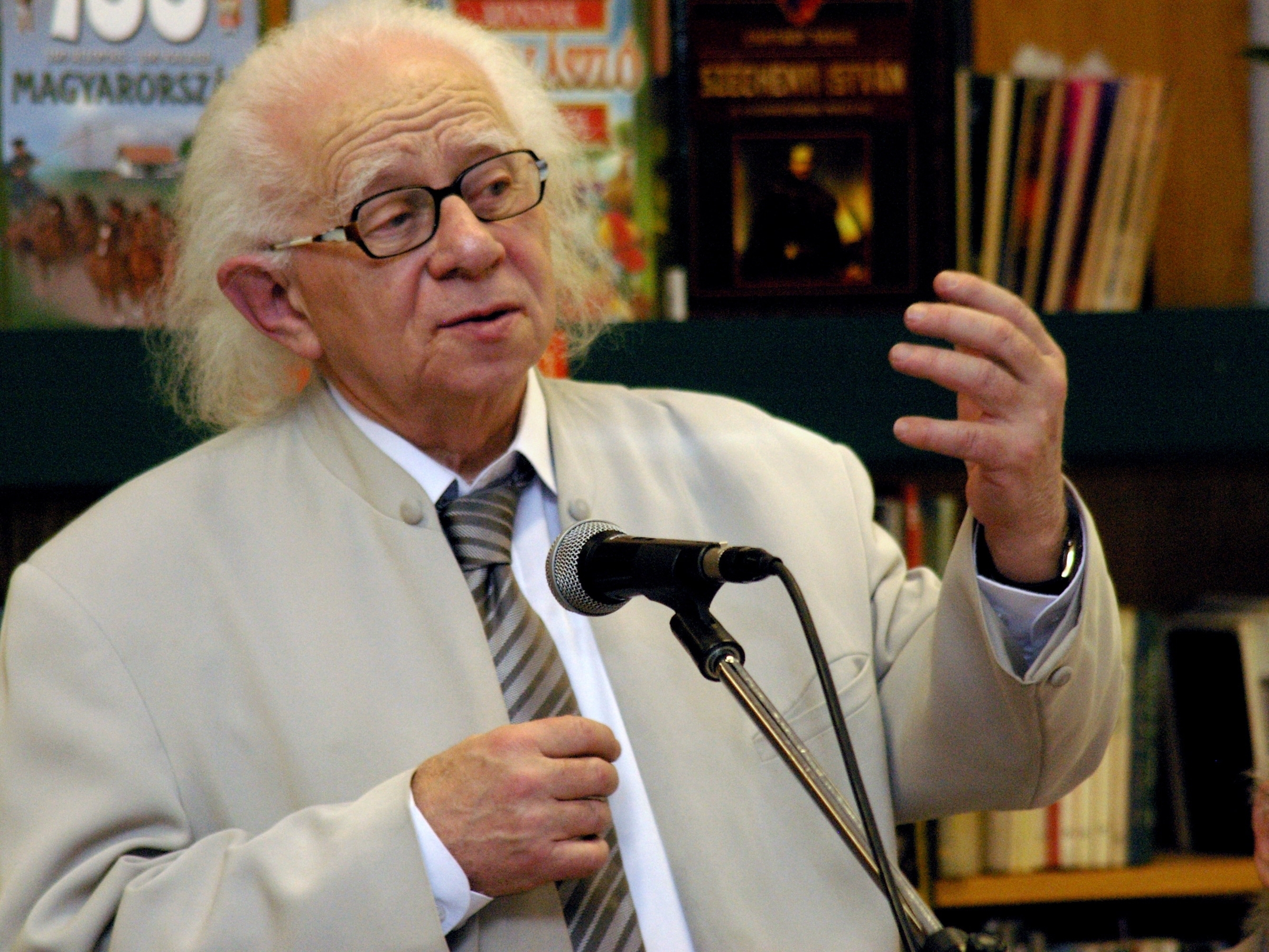Portrait of a Survivor
(June 2011)
?
EXHUMATION
As most female corpses still
hide their features behind their shawls,
as their intertwined torsos and limbs
teach us about resurrection,
as that speechless jawbone still
as the flesh decomposes, yet
these bones are bleached by the sunlight,
thus the Eternal considers all
mass murders, each by each.
Mezei went. He found employment as a semi-skilled labourer, but returned to Hungary after a year and a half because he thought he stood a better chance of attracting a girlfriend in the land of his birth. Eventually he read literature in Hungary and became a poet, novelist and polemicist. Like many Holocaust survivors of his generation, he embraced enthusiastically the ideal of Communism in the hope of building a just society free of racial, religious and class prejudice. His first serious doubts arose over the brutal suppression of the 1956 Hungarian Revolution against Soviet power.
Unusually for a Hungarian writer, his work has been published in several languages including Hebrew. He was a literary journalist most of his life.
I met him again early during the transition to democracy, when he commissioned me to translate his Holocaust poetry into English, I joined the editorial board of his journal and we became close friends. For me, our collaboration was part of a wider project, an anthology of the Hungarian Holocaust in English translation.
His work lacks a thirst for vengeance. Consider his gentle portrayal of the passive bystanders:
?
FACES
Blessed be those whom I passed on the street,
those who beheld on my chest
the yellow Star of David,
those who were saddened by the sight,
those who walked on with heavy heart
those who chose to avert their faces
closed with fixed and frozen looks.
He was deeply religious, passionate and cantankerous, shrewd and naive, generous with his love and famously mean with his money. But he published a long list of worthwhile books at a perpetual commercial loss unfailingly recouped from Jewish funding agencies, the post-Communist Hungarian political elite and a bewilderingly complex web of private enterprises.
The ensuing Hungarian Holocaust culminated in the destruction of some 600,000 civilian lives, including perhaps 70% of the entire pre-war Jewish-Hungarian population and up to 50,000 Roma. Mezei describes the aftermath:
?
ROMA CAMPSITE
Clothing, canvas, rent and ransacked,
billow with the scent of death.
The needle nose of a woodland fox
patrols the damp, deserted camp.
The well integrated provincial Jewish populations and the other minorities singled out for annihilation were humiliated, robbed, massed into ghettos and other assembly points and transported in inhuman conditions to extermination camps such as Auschwitz-Birkenau in Poland and slave-camps such as Mauthausen-Gusen in Austria.
Due to diplomatic pressures, the deportations were formally halted before the capital could be completely emptied of the target populations. Tens of thousands of people in Budapest were crammed into specially designated tenements under armed control. Many others sought survival in hiding. Both groups were exposed to persecution by the law enforcement and paramilitary agencies, persistent aerial bombing by the Allies and the eventual three-month Soviet siege of the city, whose ferocity is widely compared to that of Stalingrad. Mezei witnessed the consequent epidemic of casual murder:
?
JASON
then kicked off her own. Before the pair: the river.
Jason, discharging his first-ever magazine.
Jason, standing stunned as the tumbling bodies
are whisked away and gone with the turbulent current.
CHRISTMAS IN AUSCHWITZ
?
I
Holding that child will cost your life,
on the ramp, before the selection. Today
that advice resounds a thousandfold.
?
II
When Mengele sent off Mary
and the Child towards the left,
the Saviour was even born
?
Mezei started publishing Holocaust poetry only in old age. So now do some others, albeit very cautiously. Apart from one brave and inadequate recent attempt, I am not aware of a single anthology of Hungarian Holocaust poetry published in all the decades since the war. My own sources of original material are mostly small-circulation one-off collections, early Second World War publications, unpublished manuscripts and mass-circulation books whose contents are deliberately misinterpreted in lengthy analyses by literary/academic hacks.
I began translating poetry as a young man in the hope of learning from my betters. I saw myself as a fine-art student in a public gallery copying the work of a great master in order to learn his techniques by re-creating the same composition on a different canvass.
To comment on this article, please click here.
To help New English Review continue to publish beautiful and important poetry such as this, please click here.
here.
